Cody-Kilgore’s starting center, Dylan Naslund, does more than protect his quarterback and create running space for his Cowboys teammates.
“I caught six touchdown passes last year,” Naslund said. “I’m eligible.”
On defense, Naslund plays mostly on the defensive line because of his size – he’s all of 5-11, 205 pounds. Except sometimes he also lines up at safety, which gives his smaller, quicker teammates a better chance to run down the opposition before they break into open space.
Welcome to six-man football, where everyone is eligible, speed is king and taking advantage of mismatches is key. Welcome to six-man football, a game that has its roots deeply grounded in Nebraska.
Nearly 90 years ago, Stephen Epler, a teacher at Chester High School, realized his school’s low enrollment would make fielding an 11-man football team difficult. He shared his concerns with his school superintendent. But they didn’t cancel football.
Instead, Epler improvised and created a new game. A game that relied on speed rather than size, and emphasized blocking and tackling in the open field.
Football, but different.
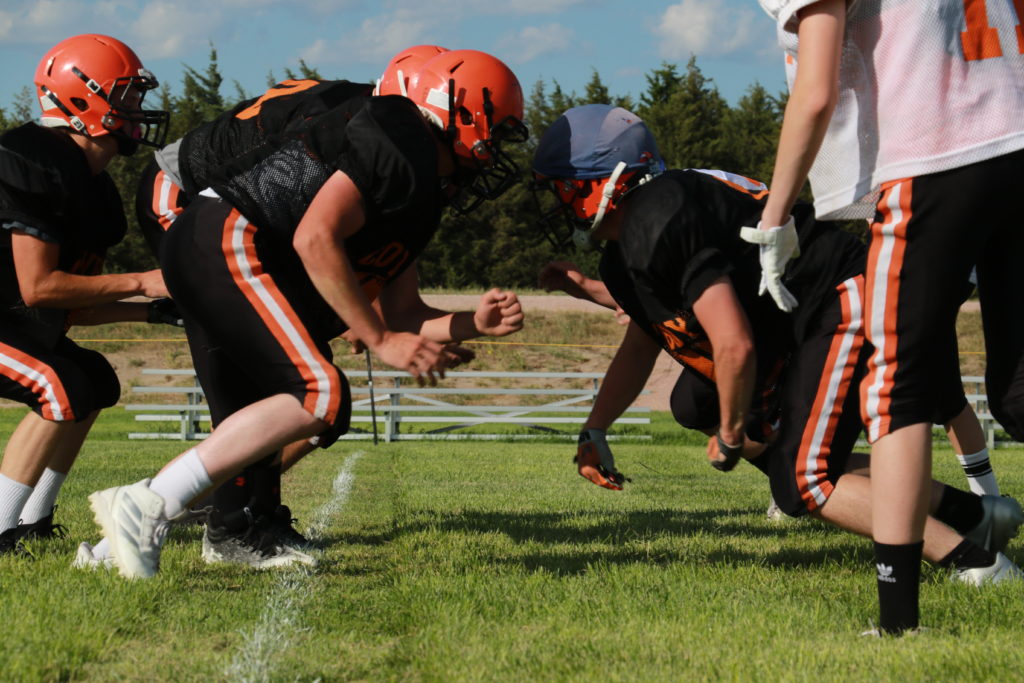
He dreamt up a pigskin variation where any of the team’s six players can touch the ball and score a touchdown on any play. A game where high-octane shootouts are the norm.
It worked for small schools during the Great Depression. It still works today.
“It’s just like fastbreak basketball,” said Richard Walter of Shickley, a former teacher and coach who wrote his master’s thesis on six-man football. “Scoring. Lots of it.”
“Speed is still the winner,” agreed Landon Miller, who recently stepped away after coaching nine years at Cody-Kilgore. “You have a big field and you have a lot of space. If you’re fast, that’s the winner.”
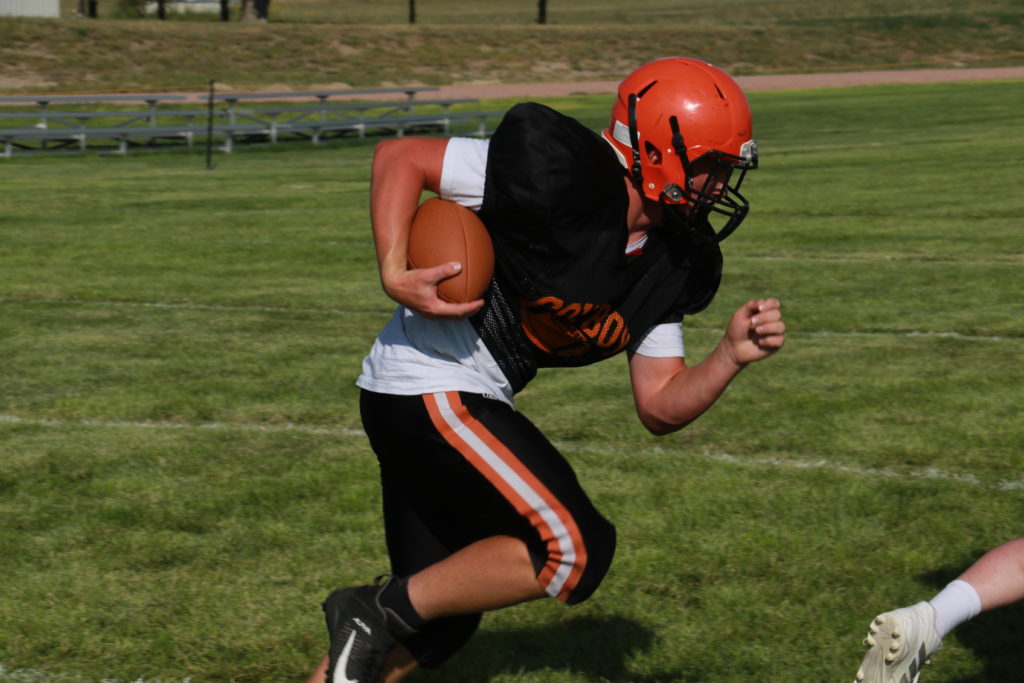
Six-man football debuted on Sept. 26, 1934, in Hebron, with players from Chester and Hardy, called the Hard-Chests, competing against players from Belvidere and Alexandria, tabbed Bel-Alex. Hebron College provided equipment for the game, played under floodlights at Hebron Athletic Field. The game ended in a 19-19 tie. Admission ranged from 5 cents in the nosebleeds to a costly 25 cents for the best seats.
Epler produced a handbook, first published in 1937 and revised eight years later, about his game and its rules. Jim Langin, a former coach who has officiated five six-man Nebraska state championship games, said most of Epler’s original rules are still in play. “The guy was way ahead of his time. He nailed it.”
Among the rules that have remained:
The playing field is 80 yards long – not your normal 100 yards as in 11-man football – and slightly skinnier at only 40 yards wide.
The offensive team must advance 15 yards for a first down.
The player receiving the snap can pass or punt the ball but cannot run it across the line of scrimmage without handing off or lateraling the ball.
The offensive team must have three or more players on the line at the snap.
A touchdown is worth six points. A successful conversion by placekick or drop kick is worth two. A successful conversion by run or pass is worth one point. A field goal: Four points.
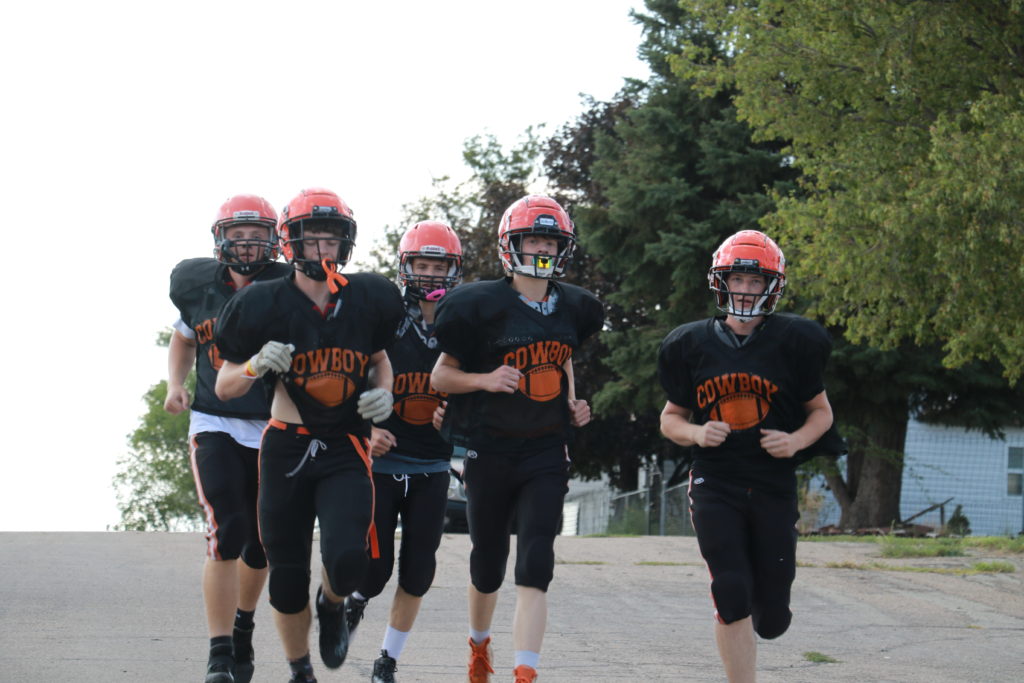
After Epler invented six-man, it quickly exploded in popularity. By the late 1940s, more than 1,800 American high schools fielded six-man teams, and the game had spread into Canada and several other countries.
And it’s still popular today, particularly in the smallest Nebraska high schools. Without six-man football, schools scattered across the state – the Red Clouds, Paxtons and Crawfords – might not field teams, said Nate Neuhaus, assistant director in charge of football for the Nebraska School Activities Association. Because of the distance between them, these schools are willing to travel hundreds of miles to compete, he said.
“In many cases, your high school football team is a front porch for your community. It’s what brings people together,” he said. “It allows those towns to maintain community excitement and traditions by playing football on Friday night like anyone else.”
Then, Neuhaus corrects himself – “On Friday afternoons. Not all six-player schools have lighted fields.”
The NSAA first sanctioned six-man football, also known as six-player football because girls have participated, in 1987 when 27 Nebraska schools competed. But Nebraska dropped sanctioned playoffs in 1999 when just seven schools fielded six-man teams.
A resurgence nearly 20 years in the making led to reinstatement of sanctioned playoffs in 2018. Last year, Cody-Kilgore defeated Potter-Dix in the state final, 65-37.
Nationally, nearly 5,700 high school students competed in six-man football during the 2018 season – the latest stats available by the National Federation of State High School Associations. More than one-half played for teams in Texas.
Thirty-two Nebraska high schools will field a six-man team this season, which opened on Thursday, August 25. Thirty-one teams will attempt to prevent Coach Trent Ford’s Cody-Kilgore team from repeating as state champion.
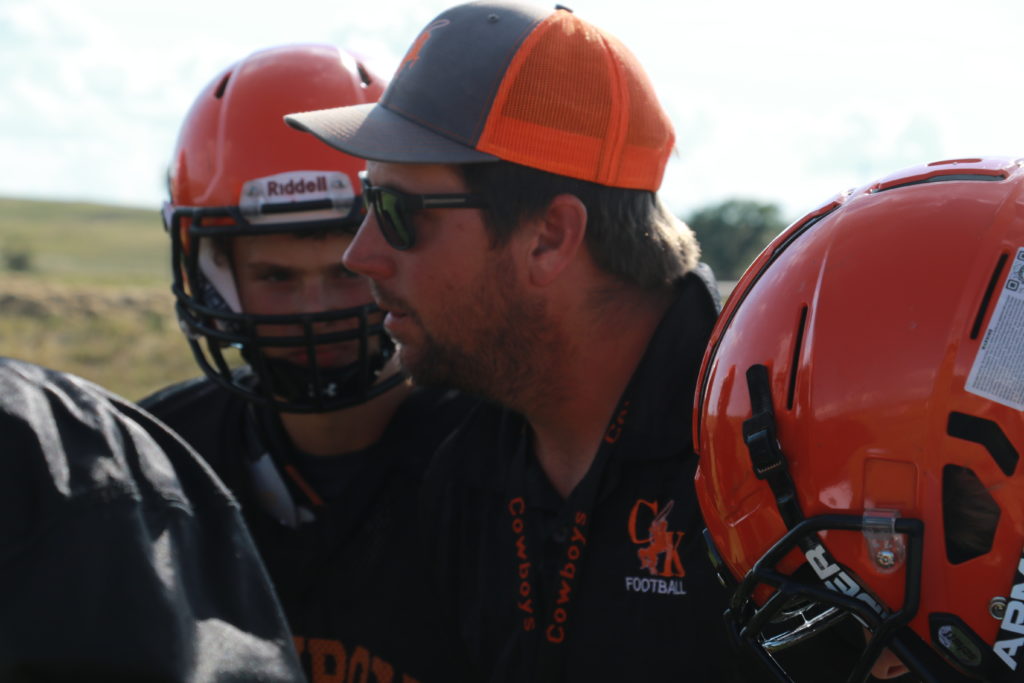
Ford’s Cowboys team falls on the high end of the six-man classification because the school has 27 boys in grades 9 through 11. Ford said he’ll rely on his four seniors, including Naslund, to lead his team.
Thirteen players on the roster means his Cowboy team can scrimmage. “That’s huge.”
Still, Ford said, his starters will play both ways.
The Sioux County team coached by Barry Swisher finds itself on the low end of six-man, because the consolidated school in Harrison – located in extreme northwest Nebraska, mere miles from the Wyoming border – has only 11 male students in those three grades.
Swisher said he’ll rely on four junior returning starters to anchor his team of 11 players. His team may lack size – his biggest player is 170 pounds – but has speed to compete. “Our biggest concern is staying healthy like everyone else,” he said.
Staying healthy may be a bigger concern for Sioux County, who, as recently as 2016, had only seven players out for six-man football. That season, Sioux County played three games with just six players and finished two with five.
“We won one of those games,” Swisher said. “We’re good this year with 11. We can almost scrimmage.”
Charlotte Gezi, Stephen Epler’s daughter, said her father would be proud to know his game has endured in places like Sioux County.
Epler served in the U.S. Navy, earned his doctoral degree at Columbia University and then helped found Portland State University. He didn’t talk much about how he also created a new sport.
“When asked, I could always tell he was proud,” Gezi said.
He would be proud to know that his game is now international and features an annual all-star game with players from the United States and Canada, she said. He’d also be proud that thousands of high school athletes at low-enrollment schools compete in football each year.
Author Carlton Stowers, in his ode to six-man football in Texas “Where Dreams Die Hard,” included a nod to Epler and his vision. Stowers also noted the reward in Epler’s rules for a two-point kicked conversion after a touchdown. “And since it was unlikely that kicking specialists abounded in the Nebraska corn belt,” Stowers wrote, “he put a premium on such ability.”
Chester, population 222, still celebrates Epler and his creation. For years, the community hosted Stephen Epler Day, a celebration centered on a six-man contest called the Epler Bowl, featuring Chester and a rival.
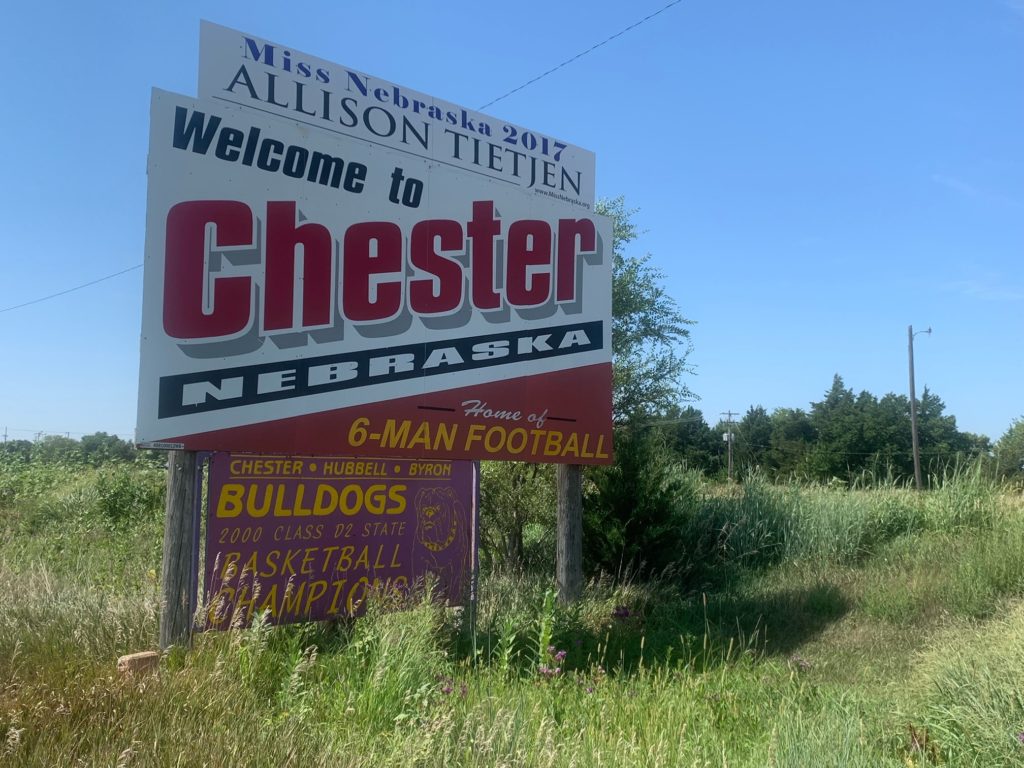
Trophies from four Epler Bowls in the late 1940s and early ’50s remain in the Municipal Auditorium, rescued from the trophy case when Chester consolidated with nearby schools.
Mayor Roger Crouse said an effort is under way to create a museum dedicated to six-man football. The local café just closed. Perhaps, the community could work to reopen a combination café-museum. “Kind of like an Applebee’s,” he said.
Community residents already have started donating their memorabilia to the effort.
And there’s the sign on the outskirts of town, which proclaims Chester as the “Home of 6-Man Football” and Miss Nebraska 2017, Allison Tietjen. Crouse said he sees motorists stopping along the roadway to photograph the sign.
“There’s still interest. We’re interested. We just need to keep the ball rolling.”

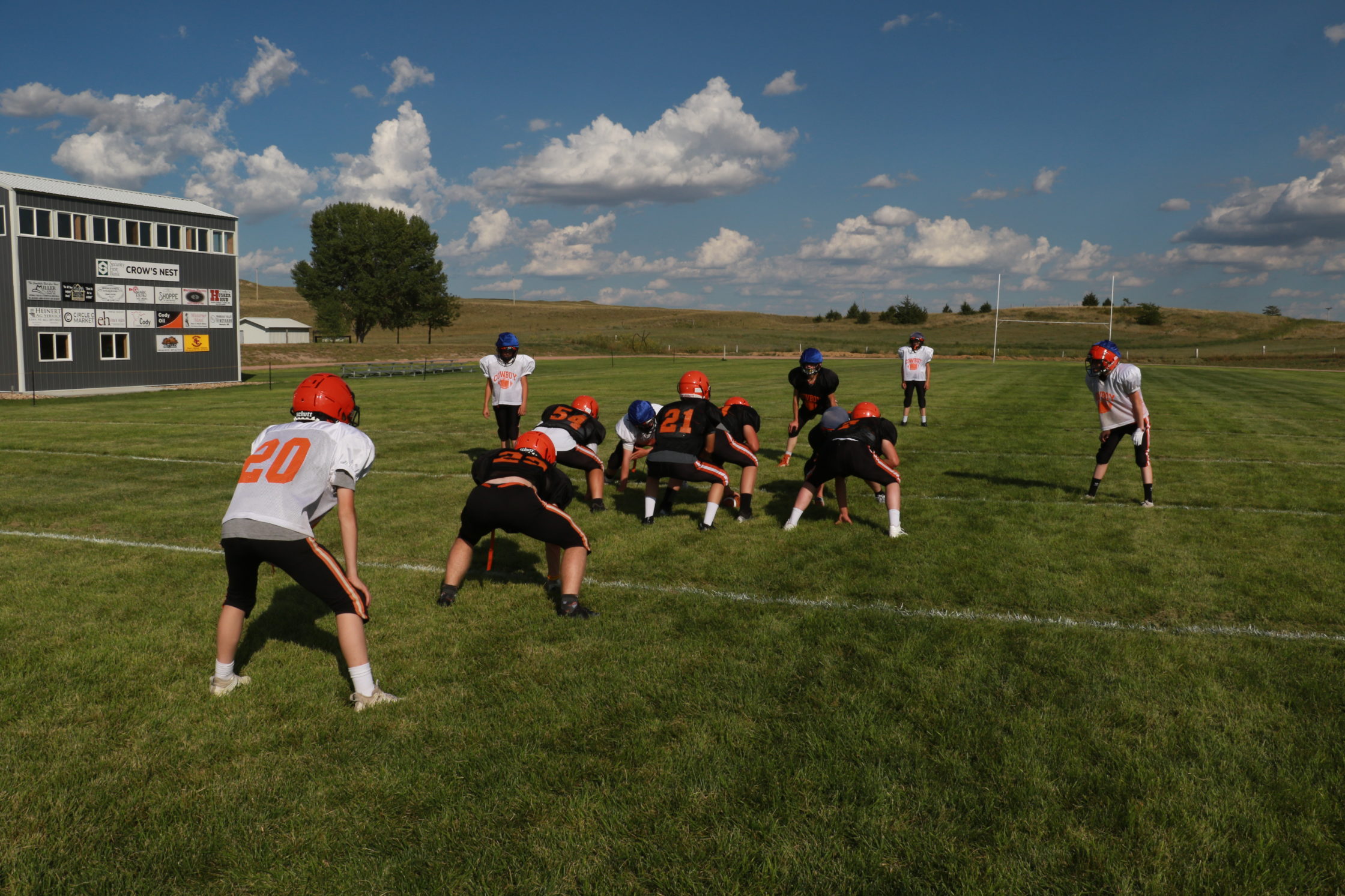


4 Comments
Loved this story, what a wonderful way to highlight small town Nebraska.
Have you heard of the Daily Yonder? It’s a rural newspaper, too. You ought to get your story in. I don’t know much about football but enjoy reading small town news, from everywhere.
Thank you for the history lesson of 6-man football. Very interesting.
Nice article written about one of the greatest games ever invented…six-man football!